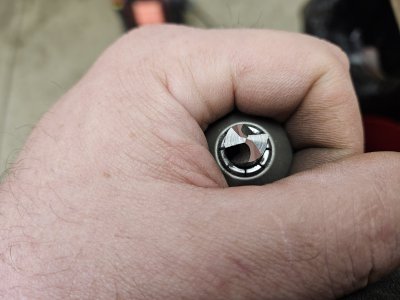- Joined
- Apr 23, 2018
- Messages
- 6,602
What I don't like is being treated like a moron after hundreds and hundreds of attempts with varying degrees of success and being told I'm doing it wrong while following the directions.
I'm following directions with the new machine and getting reasonably good results without clocking issues.
I'm not treating you like a moron. You, like many others, obviously see a unit like the Drill Doctor or Vevor as a "black box".
In science, computing, and engineering, a black box is a system which can be viewed in terms of its inputs and outputs (or transfer characteristics), without any knowledge of its internal workings. Its implementation is "opaque" (black). The term can be used to refer to many inner workings, such as those of a transistor, an engine, an algorithm, the human brain, or an institution or government.
To analyse an open system with a typical "black box approach", only the behavior of the stimulus/response will be accounted for, to infer the (unknown) box. The usual representation of this black box system is a data flow diagram centered in the box.
The opposite of a black box is a system where the inner components or logic are available for inspection, which is most commonly referred to as a white box (sometimes also known as a "clear box" or a "glass box").
Part of the reason it is a black box is that you can't see inside. You stick a bit in here, turn and rock there, and out it comes. You have no way to troubleshoot an unexpected result. You followed the instruction, but didn't know enough about what is happening inside the black box to affect change. This is the main complaint about drill doctors in my opinion. It takes some sort of second sight to know that if you grind off the tip of a drill, you need to re-index the helix to get the right grind. I don't know how to teach second sight, but it's an important part of the process for working outside the box.



